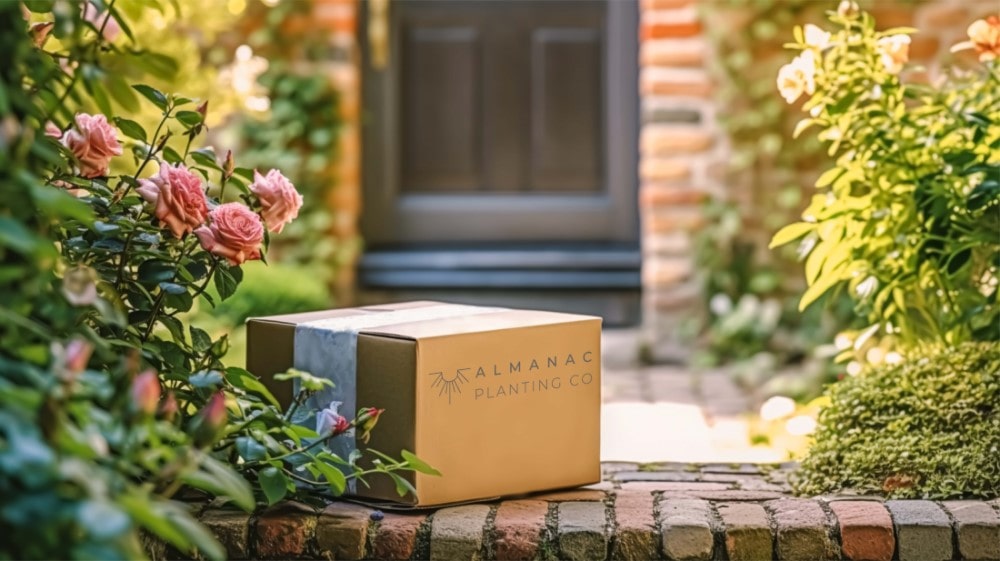Uses: Compact Deciduous Flowering Tree
Benefits: The purple leaf version of Eastern Redbud! Profuse purplish rose colored blooms on bare branches in spring before leaves form! Native to Eastern America! Low maintenance!
USDA Hardiness Zones: 5 - 9
Sun: Full sun to partial shade
Life Cycle: Perennial
Mature Height: 20' - 30'
Mature Width: 25' - 35'
Bloom Season: Early to Mid Spring
Growth Rate: Moderate
Summary
The purple leafed version of our Eastern Redbud!
Cercis canadensis 'Forest Pansy'—commonly called Forest Pansy Redbud, Purple Eastern Redbud, and Purple American Redbud—is a captivating, compact deciduous flowering tree that's most famous for being a purple leafed tree that's one of the earliest and brightest bloomers of spring!
Its ramiflorous nature brings blooms on bare branches, making way for vibrant foliage. The pink to purple blossoms, about 1/2" in diameter, give way to bean-like seed pods that add interest through summer and winter. The gray bark, scaling on mature trees, adds to its year-round charm.
Remarkably hardy, the 'Forest Pansy' Redbud withstands temperatures down to -20°F. Its foliage transitions from scarlet purple to golden yellow and red in autumn.
Ideal for various garden styles, it's low maintenance and perfect as a standalone feature or a graceful border. Deer-resistant, it's a hassle-free and beautiful addition to any landscape.
The 'Forest Pansy' Redbud is more than a tree; it's a compact burst of nature's colors, perfect for enhancing any outdoor space.
Care
Forest Pansy Redbud Care
Provide full sun or partial sun. Too little light will cause growth issues.
It's suggested to plant southern grown Forest Pansy Redbuds in an area that gets some shade from the strong afternoon sun. Conversely, those grown in northern climates often benefit from as much sun as possible.
Fertilization is suggested, especially if soil is poor. Our slow release fertilizer is a great option. We recommend that fertilizations be completed in the spring.
Does best in soil that's moist, slightly acidic, and well draining. Does not thrive in dry soil, although it's known to tolerate dry soil once established.
Pruning and trimming is typically not required, although it may be done to promote desired shaping. Any heavy trimming should be done over the course of winter. Prune any dead branches as they appear.
Water regularly, especially after planting prior to establishment. Attempt to keep soil moist, but not wet. It's suggested to place 2"-3" of mulch under this plant to help retain a light degree of ground moisture and to prevent the growth of weeds around the base.
Forest Pansy Redbuds do not transplant well once they're over a few years old.
Size
Size of Forest Pansy Redbud for Sale Online
The Cercis canadensis 'Forest Pansy' that we sell online will ship in a greenhouse grade grow pot. Each plant will be appropriately sized for its pot. Please contact us with any specific questions.
Size of Forest Pansy Redbud When Mature
Cercis canadensis 'Forest Pansy' often grows to be wider than tall, typically reaching mature heights of 20' - 30' and mature widths of 25' - 35'.
Additional Information
What is the botanical name of Forest Pansy Redbud?
Its botanical name is Cercis canadensis 'Forest Pansy'.
Toxicity and Risks of Forest Pansy Redbud
Cercis canadensis 'Forest Pansy' contains toxic saponins, and may be toxic if ingested in large doses.




